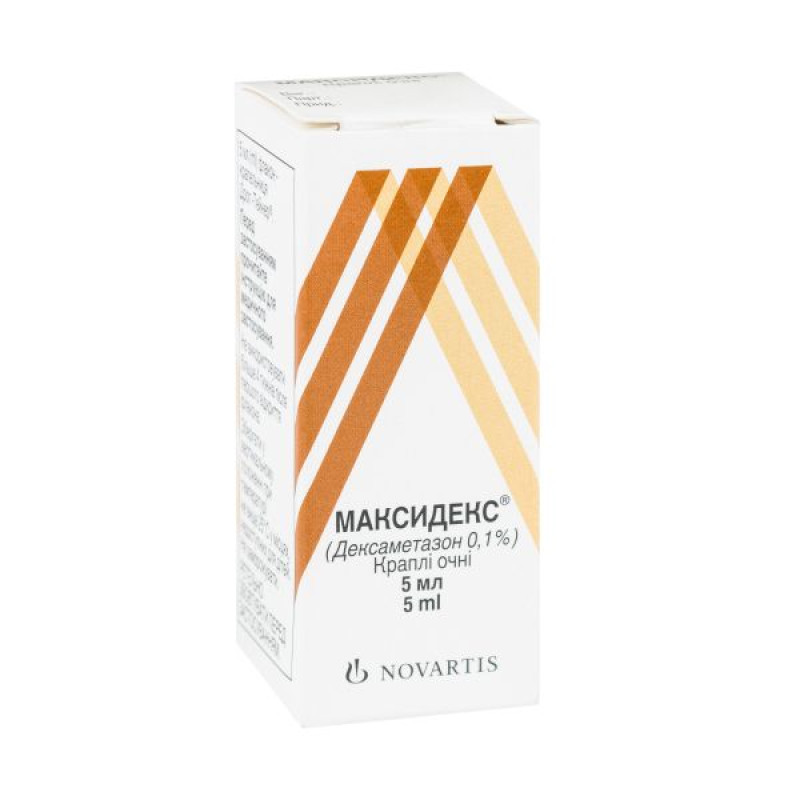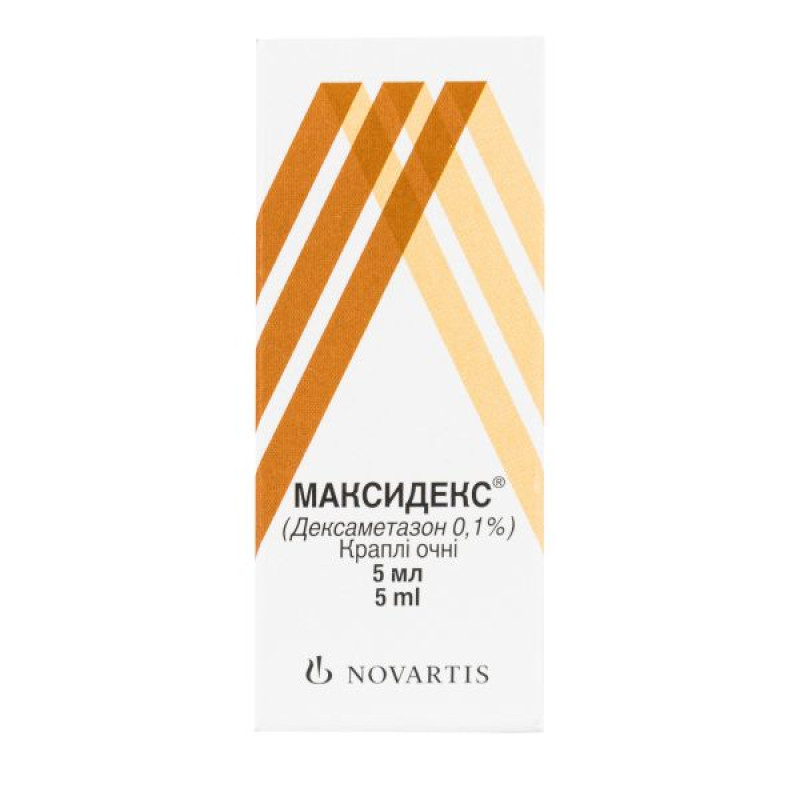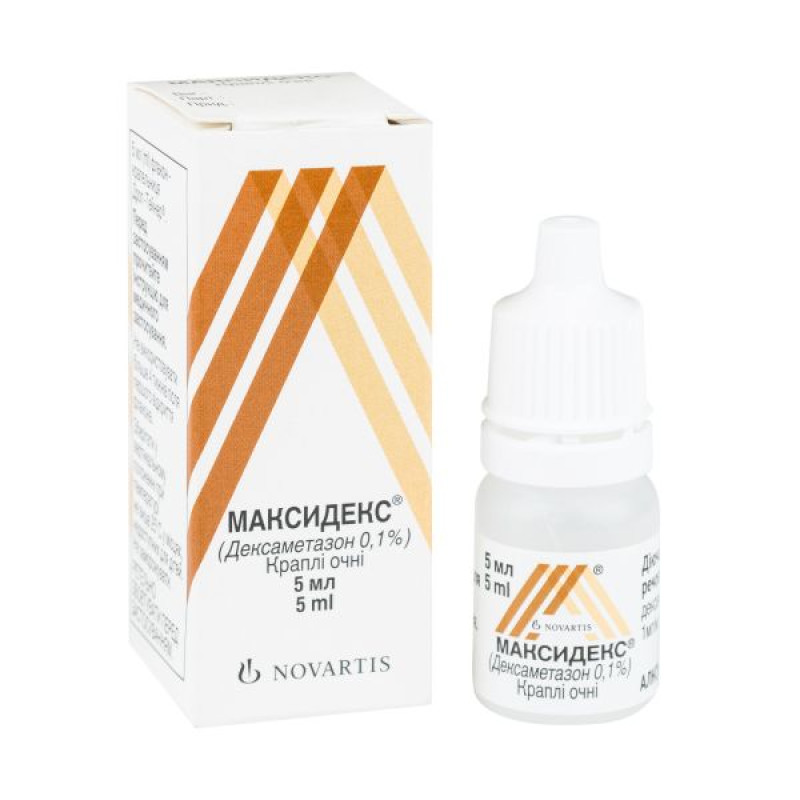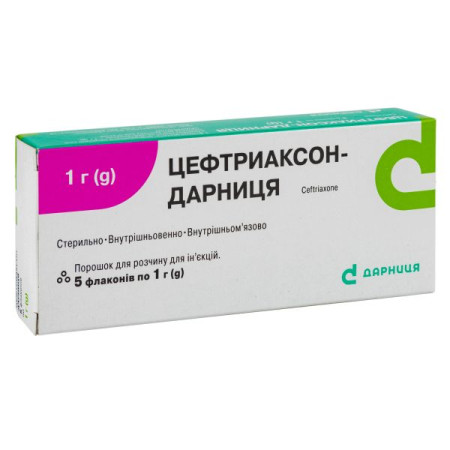Maxidex eye drops 1 mg/ml dropper bottle drop-tainer 5 ml

Pharmacological properties
The effectiveness of corticosteroids in the treatment of inflammatory eye diseases is well known. Corticosteroids achieve their anti-inflammatory effect by inhibiting vascular endothelial cell adhesion molecules, cyclooxygenase I or II, and cytokine release. As a result, the formation of inflammatory mediators is impaired and leukocyte adhesion to the vascular endothelium is inhibited, thus preventing their penetration into inflamed eye tissues. Dexamethasone has anti-inflammatory effects with less pronounced mineralocorticoid effects compared to some other steroids and is one of the most potent anti-inflammatory agents.
Preclinical safety study results
The systemic toxicity of the active substance is well studied. The systemic effects of dexamethasone may be associated with effects related to glucocorticosteroid imbalance. Repeated dose toxicity studies of Maxidex eye drops in rabbits revealed systemic effects associated with corticosteroids; but even at doses significantly exceeding the human dose, the manifestations of toxicity have little clinical relevance. When using Maxidex in recommended doses, the occurrence of these effects is practically impossible. In vitro and in vivo studies of the active substance did not reveal any mutagenic effects. Animal studies demonstrated the teratogenic effects of corticosteroids. Instillation of 0.1% dexamethasone into the eyes of pregnant rabbits led to an increase in the number of cases of impaired fetal development and intrauterine growth retardation. Fetal growth retardation and increased mortality were observed in rats with prolonged therapy with dexamethasone.
Maxidex should be used during pregnancy only if the potential benefit to the mother outweighs the potential risk to the fetus. Studies on the carcinogenic effects of dexamethasone have not been conducted.
The ophthalmic bioavailability of dexamethasone when using Maxidex was studied in patients after cataract surgery. The maximum level of dexamethasone in the intraocular fluid, equal to approximately 30 ng / ml, was reached within 2 hours. Then there was a decrease in concentration with a half-life of 3 hours.
Dexamethasone is eliminated from the body by metabolism. Approximately 60% of the dose is excreted in the urine as 6-beta-hydroxydexamethasone. Unchanged dexamethasone is not detected in the urine. The plasma half-life is relatively short - 3-4 hours. Dexamethasone is approximately 77-84% bound to serum albumin. Clearance ranges from 0.111 to 0.225 l / h / kg, the volume of distribution ranges from 0.576 to 1.15 l / kg. The bioavailability of dexamethasone when administered orally is approximately 70%.
Indication
Treatment of steroid-responsive non-infectious inflammatory and allergic conditions of the conjunctiva, cornea and anterior segment of the eye, including inflammatory reactions in the postoperative period.
Application
The drug is intended for ophthalmic use only.
Use in adults, including the elderly
In severe or acute inflammation, 1 or 2 drops should be instilled into the conjunctival sac of the affected eye every 30-60 minutes as an initial dose. In case of a positive effect, the dose should be reduced to 1-2 drops every 2-4 hours. The dose can then be reduced to 1 drop 3-4 times a day if this dose is sufficient to control the inflammation. If the desired result is not achieved within 3-4 days, additional systemic or subconjunctival therapy may be prescribed.
In chronic inflammations, the dose is 1 or 2 drops in the conjunctival sac of the affected eye every 3-6 hours or more often if necessary.
For allergies or minor inflammation, the dose is 1-2 drops into the conjunctival sac of the affected eye every 3-4 hours until the desired effect is achieved.
The duration of use of the drug is determined by the doctor depending on the severity of the disease.
Nasolacrimal occlusion or careful eyelid closure is recommended after application. This reduces systemic absorption of drugs administered into the eye and thus the likelihood of systemic side effects.
Contraindication
Hypersensitivity to dexamethasone or any component of the drug. Acute superficial keratitis caused by herpes simplex, vaccinia and chickenpox and other viral diseases of the cornea and conjunctiva. Mycobacterial infections of the eye caused by, but not limited to, acid-fast bacteria such as Mycobacterium tuberculosis, Mycobacterium leprae or Mycobacterium avium. Fungal diseases of the structures of the eye. Untreated purulent eye infection, which, like other diseases caused by microorganisms, may be masked or exacerbated in the presence of corticosteroids.
Side effects
Glaucoma with optic nerve damage, impaired visual acuity and field of vision, cataract formation, secondary eye infection associated with suppression of the body's response to infection, perforation of the eyeball, local irritation and allergic reactions.
ophthalmological effects
Some ophthalmic adverse reactions have been reported in the post-marketing period, the incidence of which was single (1/10,000). Very rare - increased intraocular pressure, feeling of discomfort in the eyes, mydriasis, keratitis, irritation, increased eye sensitivity, ptosis.
Corticosteroids should be used with extreme caution in the treatment of herpes simplex. Prolonged use of corticosteroids or increased frequency of administration may lead to ocular hypertension, glaucoma with damage to the optic nerve and deterioration of visual acuity and visual fields, and the formation of subcapsular cataracts in the posterior chamber of the eye. In susceptible patients, intraocular pressure may increase, even after the use of usual doses. Continuous monitoring of intraocular pressure is recommended.
If the drug is prescribed to patients with glaucoma, the duration of treatment should be limited to two weeks, except in cases where prolonged treatment is justified; intraocular pressure should be constantly monitored.
Fungal infections of the cornea are particularly active with prolonged use of steroids. The possibility of fungal invasion should be considered in the formation of steroid-resistant corneal ulcers. Secondary bacterial infection of the eye may also occur when the body's response to infection is suppressed. Preventive treatment may mask or exacerbate acute purulent eye infections. It is known that in diseases that lead to corneal or sclera depletion, the use of topical steroids may cause perforation.
Treatment should not be stopped prematurely, as sudden discontinuation of high-dose topical steroid treatment may cause re-inflammation of the eye.
Topical corticosteroids may slow the healing of corneal wounds.
Since Maxidex eye drops contain benzalkonium chloride as a preservative, this may cause irritation. This preservative is also known to discolor soft contact lenses. Therefore, patients should remove contact lenses before using Maxidex and wait 15 minutes after instillation of Maxidex before inserting contact lenses.
The safety and effectiveness of Maxidex in children have not been established.
Maxidex has not been studied in patients with kidney or liver disease. However, due to the low systemic absorption of dexamethasone after topical application of this drug, no dose adjustment is necessary.
The bottle should be shaken well before use.
To prevent contamination of the dropper tip and suspension, care should be taken not to touch the eyelids or other surfaces with the dropper tip.
Effects on ability to drive and use machines
As with other eye drops, temporary blurred vision or other visual disturbances may affect the ability to drive or use machines. If blurred vision occurs during instillation, the patient should wait until the vision clears before driving or using machines.
Pregnancy and breastfeeding
The safety of the drug during pregnancy and breastfeeding has not been established.
pregnancy
There are no adequate and well-controlled studies of Maxidex during pregnancy. Maxidex should be used during pregnancy only if the potential benefit justifies the potential risk to the fetus.
Breastfeeding period
When used systemically, corticosteroids penetrate into breast milk and may suppress growth, affect endogenous corticosteroid production, or cause other undesirable effects.
It is not known whether topical application of Maxidex can lead to systemic absorption of dexamethasone sufficient to produce significant amounts of the drug in breast milk. With topical application of Maxidex, systemic effects are weak, so the risk is considered small, but it should be taken into account when prescribing this drug to women who are breastfeeding. Since most drugs penetrate into breast milk, the possibility of temporarily stopping breastfeeding should be considered during the use of Maxidex.
Interactions
Special studies of the interaction of Maxidex with other drugs have not been conducted.
Interactions of the active substance have been reported after systemic administration. However, systemic absorption of dexamethasone after topical ocular administration is so low that the risk of any interaction is minimal. In case of concomitant therapy with other topical ophthalmic drugs, an interval of 10-15 minutes should be observed between their administration.
Overdose
No cases of overdose have been reported. In case of overdose of Maxidex with topical application, wash the excess drug from the eyes (a) with warm running water.
Storage conditions
At a temperature of 8-30 °C in a vertical position.
There are no reviews for this product.
There are no reviews for this product, be the first to leave your review.
No questions about this product, be the first and ask your question.









